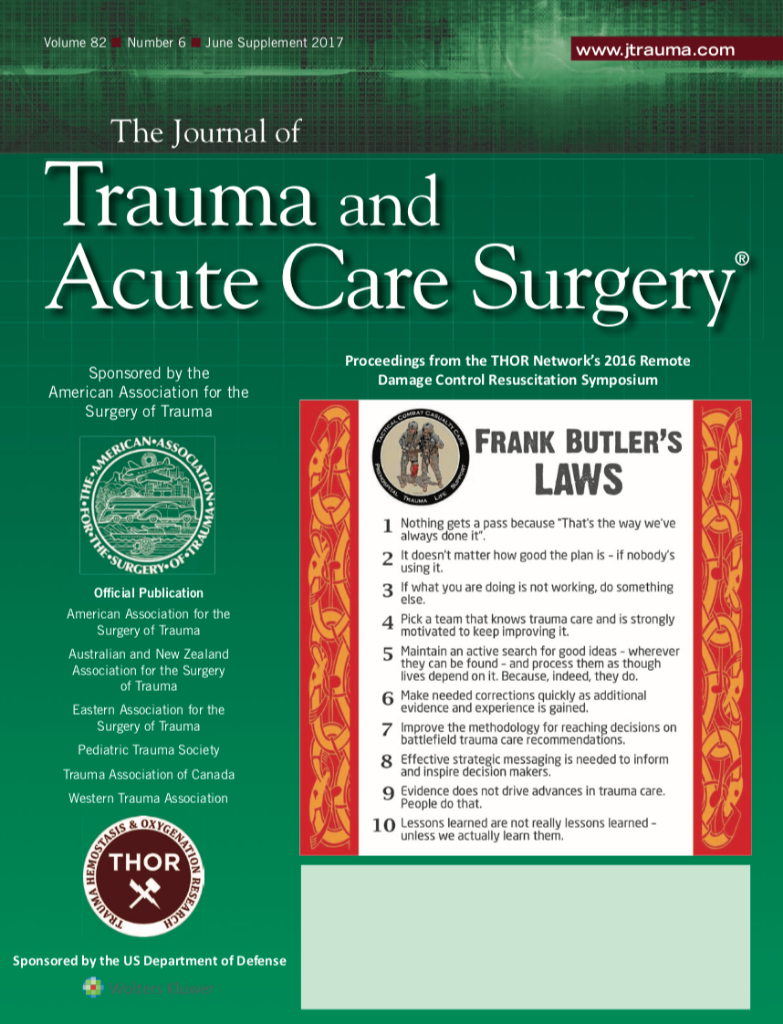
Is casting greenstick fractures in children an overtreatment?

Is casting greenstick fractures in children an overtreatment?
Treatment of impacted greenstick forearm fractures in children using bandage or cast therapy: A prospective randomized trial
J Trauma. 2010 Feb;68(2):425-8.Did you know you're eligible to earn 0.5 CME credits for reading this report? Click Here
Synopsis
92 children (age range 4 to 13 yr) with an impacted greenstick fracture of the distal radius or ulna were randomized to be managed by either casting or a soft bandage therapy. Follow-up was conducted at 1, 4, and 6 weeks after randomization. Soft-bandage therapy produced greater pain at the start of the treatment than cast therapy, but it allowed for a faster recovery in wrist function and reduced overall discomfort.
Was the allocation sequence adequately generated?
Was allocation adequately concealed?
Blinding Treatment Providers: Was knowledge of the allocated interventions adequately prevented?
Blinding Outcome Assessors: Was knowledge of the allocated interventions adequately prevented?
Blinding Patients: Was knowledge of the allocated interventions adequately prevented?
Was loss to follow-up (missing outcome data) infrequent?
Are reports of the study free of suggestion of selective outcome reporting?
Were outcomes objective, patient-important and assessed in a manner to limit bias (ie. duplicate assessors, Independent assessors)?
Was the sample size sufficiently large to assure a balance of prognosis and sufficiently large number of outcome events?
Was investigator expertise/experience with both treatment and control techniques likely the same (ie.were criteria for surgeon participation/expertise provided)?
Yes = 1
Uncertain = 0.5
Not Relevant = 0
No = 0
The Reporting Criteria Assessment evaluates the transparency with which authors report the methodological and trial characteristics of the trial within the publication. The assessment is divided into five categories which are presented below.
3/4
Randomization
3/4
Outcome Measurements
4/4
Inclusion / Exclusion
4/4
Therapy Description
4/4
Statistics
Detsky AS, Naylor CD, O'Rourke K, McGeer AJ, L'Abbé KA. J Clin Epidemiol. 1992;45:255-65
The Fragility Index is a tool that aids in the interpretation of significant findings, providing a measure of strength for a result. The Fragility Index represents the number of consecutive events that need to be added to a dichotomous outcome to make the finding no longer significant. A small number represents a weaker finding and a large number represents a stronger finding.
Why was this study needed now?
Distal forearm fractures make up 20% of all fractures in children. Currently, casting is regarded as the standard management for greenstick fractures of the distal forearm in children. However, cast therapy produces discomfort, functional loss, and the possibility of developing dystrophy. This study assessed if the casting had an advantage over conservative management using a soft bandage in pediatric green stick fractures.
What was the principal research question?
In children with impacted greenstick fractures, what are the relative risks and advantages of using soft bandage therapy compared to cast therapy, in prevention of secondary displacement of the fracture, assessed over 6 weeks following casting?
What were the important findings?
- At 4 weeks, patients in the soft-bandage therapy group had a significantly better wrist function than the cast therapy group with a median ROM of 154 degree vs. 121 degree (p<0.001)
- There was no statistically significant difference in the wrist functions between the two groups at 6 weeks follow-up (p=0.49)
- At 1 week follow-up, the mean VAS in the soft-bandage therapy group (26+/-19mm) was significantly higher than the cast therapy group (20+/-16mm; p=0.03). When the patients in the soft-bandage therapy group, who were unable to regulate their activities, were excluded from the analysis at 1 week, the mean VAS was not significantly different from the cast therapy group (p=0.17). No differences in the VAS at 4 and 6 week evaluation between groups (p=0.96 and 0.70, respectively).
- At 3 weeks follow-up, patients in the cast group reported itchiness 290 times, compared to only 140 times in the soft-bandage therapy group (p<0.001). There was no statistically significant difference in other areas of discomfort.
What should I remember most?
Compared to the standard treatment for impacted greenstick fractures of the distal forearm, soft-bandage therapy was less effective in preventing pain occurrence in the beginning of the treatment. However, patients who received soft-bandage therapy recovered their wrist functions at an earlier time and also experienced less overall discomfort during the healing process.
How will this affect the care of my patients?
In children with impacted greenstick fractures, a switch from current standard of care to bandage therapy can allow them to recover wrist function earlier, experience less discomfort, and return to normal activity sooner, without any risk of secondary displacement. Additional studies should be conducted to complement the evidence of bandage versus cast therapy in the management of greenstick fractures.
Learn about our AI Driven
High Impact Search Feature
Our AI driven High Impact metric calculates the impact an article will have by considering both the publishing journal and the content of the article itself. Built using the latest advances in natural language processing, OE High Impact predicts an article’s future number of citations better than impact factor alone.
Continue



 LOGIN
LOGIN

Join the Conversation
Please Login or Join to leave comments.